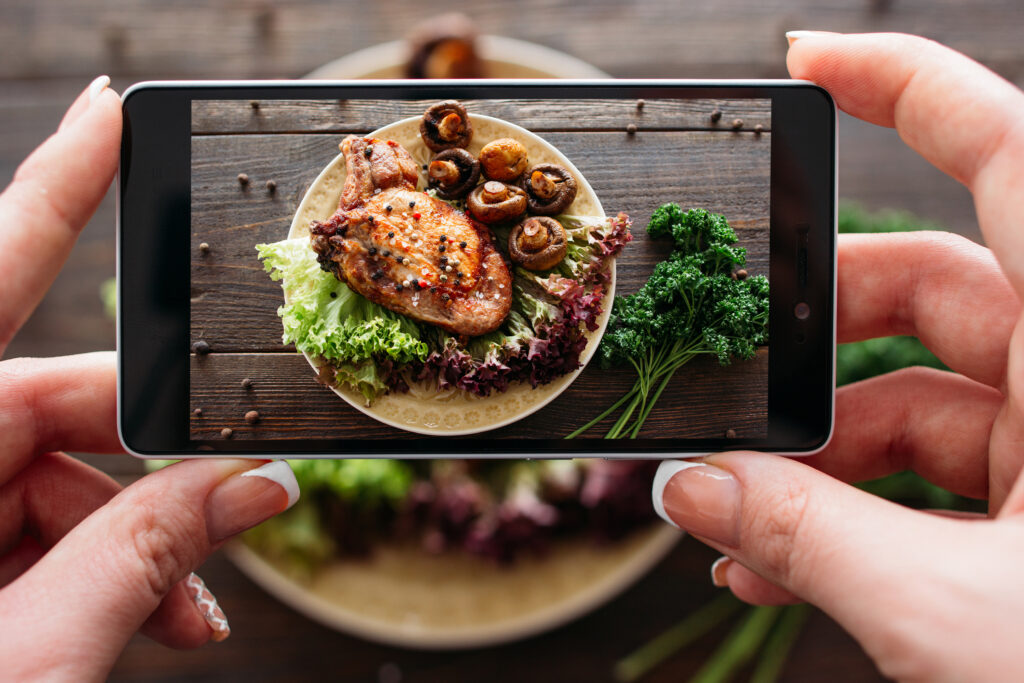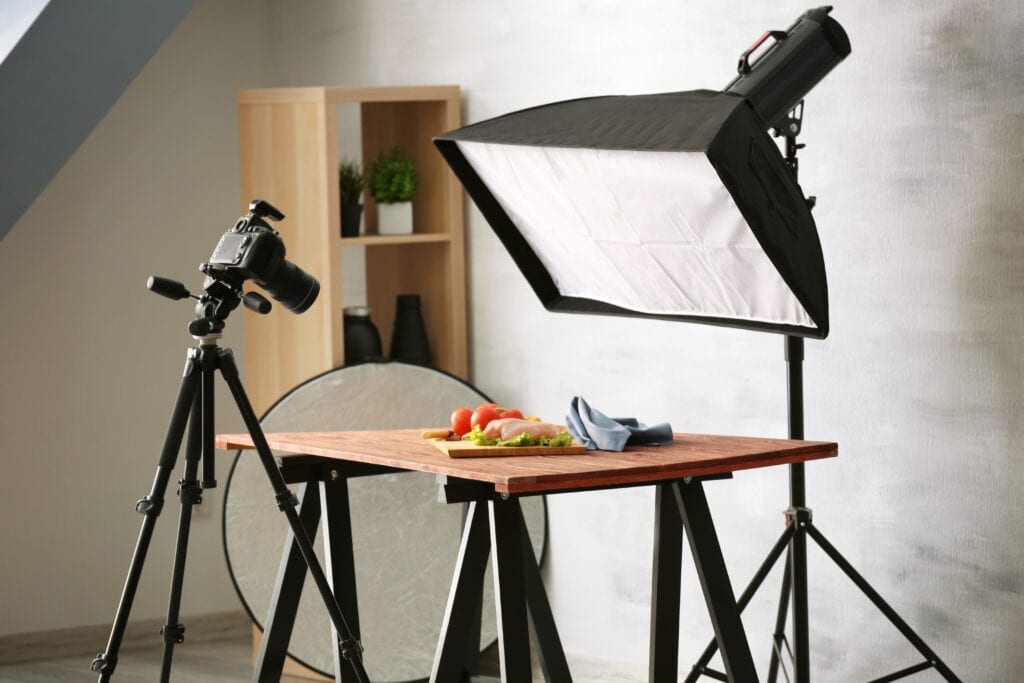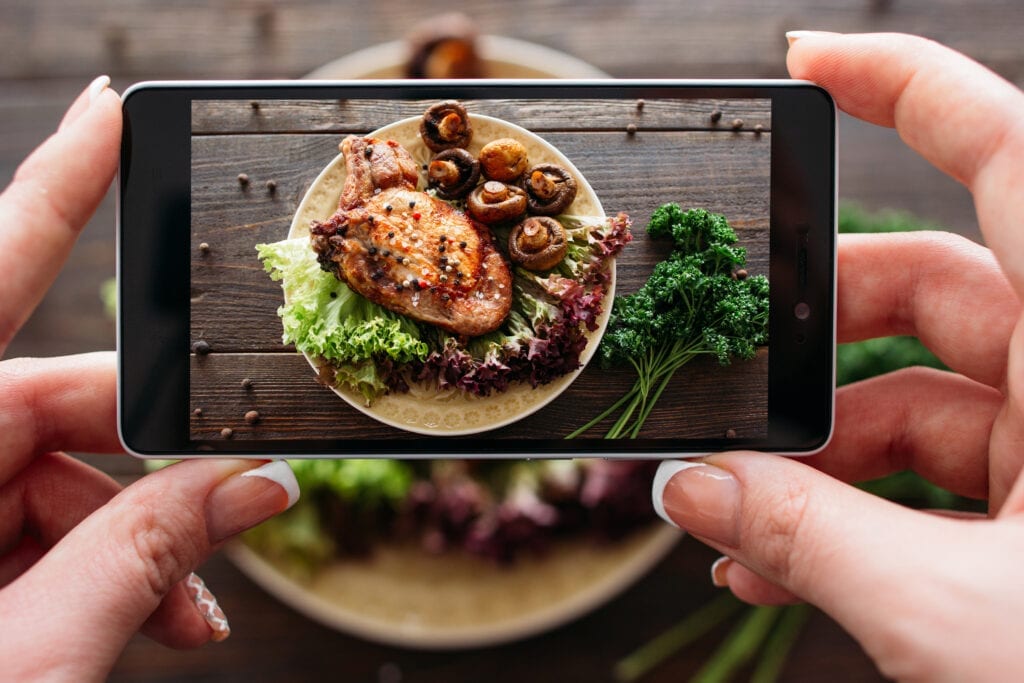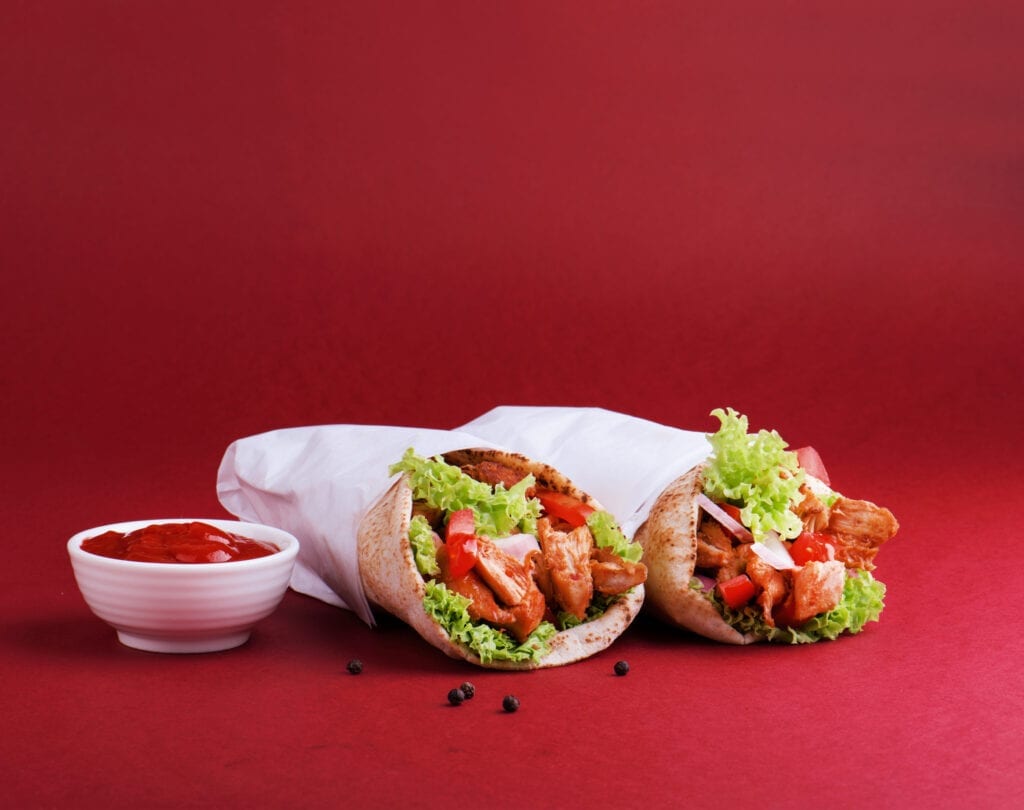
What is Food Photography? An Overview
Ever wondered why the person sitting in the neighboring seat is letting the freshness of that expensive meal dissipate away while trying to take the perfect picture of it? Is it because updating a social media account is so necessary? Well, not exactly. Only a small fraction of such food photography maniacs trade their scrumptious meals for social media account updates.
The rest of them, you’d be surprised to know, are either pursuing their passion or earning a living. Although food photography using smartphones represents small-scale or low-budget channeling of this art, it happens to be a prevailing trend of the year, especially amongst bloggers. What’s more, to know about this diverse and intriguing field, let’s explore and examine in detail!

The Background
Food photography is a popular and trending genre of still life photography. Professional food photographers make the article of food appear attractive for commercial or advertising purposes. The photographers may work in a team with art directors, prop & food stylists, as well as assistants to produce a captivating advertisement.
I bet you think that the roots of food photography trace back to your favorite app, Instagram. What else could have motivated an individual or company, other than a unique, attention-grasping Instagram feed? But, just like search engines trace their origins to data collection in libraries, food photography traces its origin to covers of cookbooks and recipe feature images.
It was in 1845 when William Henry Fox Talbot captured a masterpiece called A Fruit Piece, which you can say, marks the beginning of food photography. In the picture, there are two baskets full of fruits and pineapple is slightly tilted for a tint of style. The picture opened a new dimension for food companies. Soon, a company named Crisco introduced a promotional cookbook with a cover focusing on food. Although their cover featured an unrealistic situation and a rather sinister cover (which you can view here), the work was a continuation of the basic idea. Ever since the field has continued to evolve, and now, it exists as a complete, separate profession.

Basic Elements of Food Photography
Go to Google, Pinterest, or Instagram, and have a look at a few food images. At a single glance, you might be able to categorize those pictures that appear pleasing and those that do not. But, have you wondered as to why those images appear unpleasing when they too were captured by a professional camera? Well, that’s because food photography is more than the usage of professional equipment. It requires comprehension, understanding, and appropriate usage of particular elements, which is why food photography gets classified as a separate unique profession. Here is an overview of some basic elements of food photography.
1. Angle
Practically, you can take a picture of your food from any angle. However, not all angles can depict the story of your food. For example, the photographer has captured the picture of the chicken shawarma (above) from the front so that the tomato, chicken pieces, and other ingredients are visible. If the photographer has taken the same picture from the top, it would have looked utterly plain with only the wrapping and bowl of ketchup visible. No story, no concept. So, whenever shooting an image of food, first consider its size, height, and other features. Then, decide which angle would depict the story, the best.

2. Props & Ambiance
One might think that placing the food anywhere with anything can result in a quality picture. Well, it is a frequently highlighted mistake in tips for food photography. The items or props you place in the photo frame will also contribute to the story and depth of the image.
For example, if you place the Kheer in Matka and scatter a few dry fruits around it, the photo will reflect the origin and background of the ancient dish. But, if you place tomatoes around the dish, it will look absurd. Thus, try to use appropriate utensils, jars, food items, and props in the background.
Next, if you are using a backdrop, consider the relevant food photography backdrops, such as the one used in the chicken shawarma photo.
3. Lightening
Undeniably, the lightening in the most tricky part of food photography. The natural sunlight falling on to the frosted cupcake may look wonderful to the naked eye but, when captured, can create undesirably hard and definite shadows. Thus, a majority of food photographers prefer to work under artificial lights.
However, it does not mean one should abandon the natural light. With a few techniques, one can significantly augment the picture quality. Firstly, try to use a light diffuser to soften those defined shadows and brightly illuminated parts of the picture. Next, use a few white and black cards to control the light in the image. The purpose of the white card is to reflect light into the dark spots to reveal details. Whereas, the purpose of the black card is to make the shadows stronger.
RabeetaAbbas
Thanks, Manal. I really needed that!